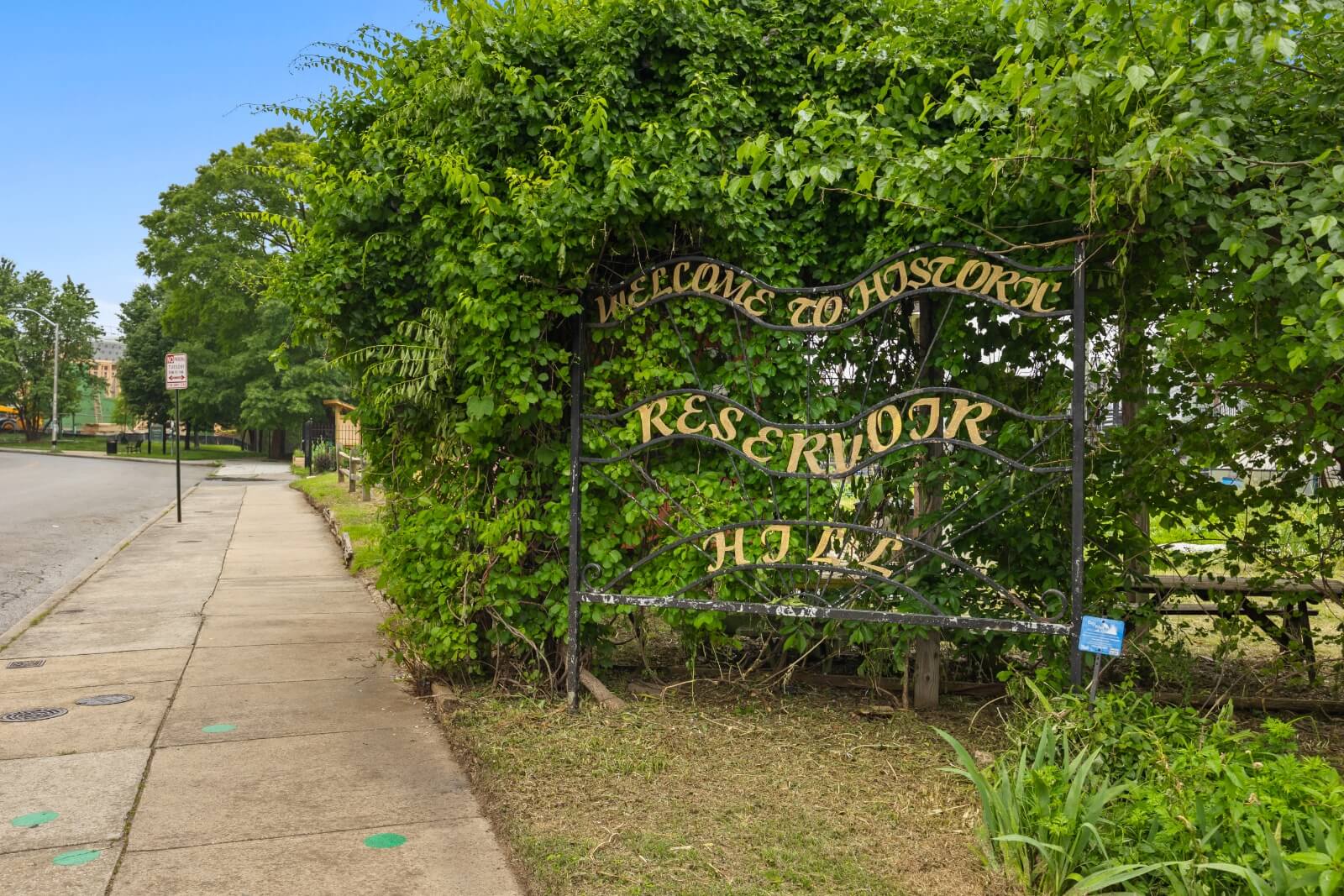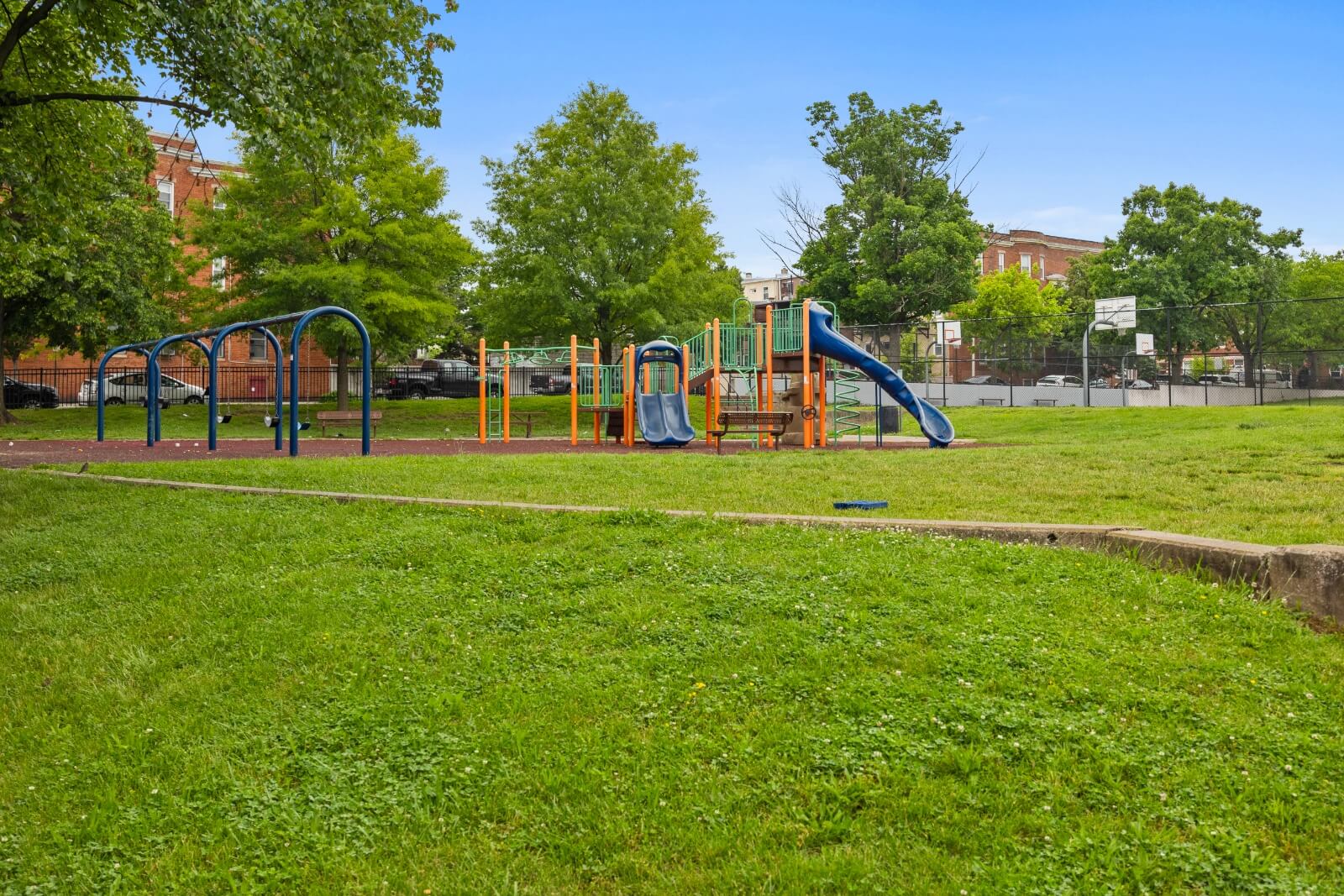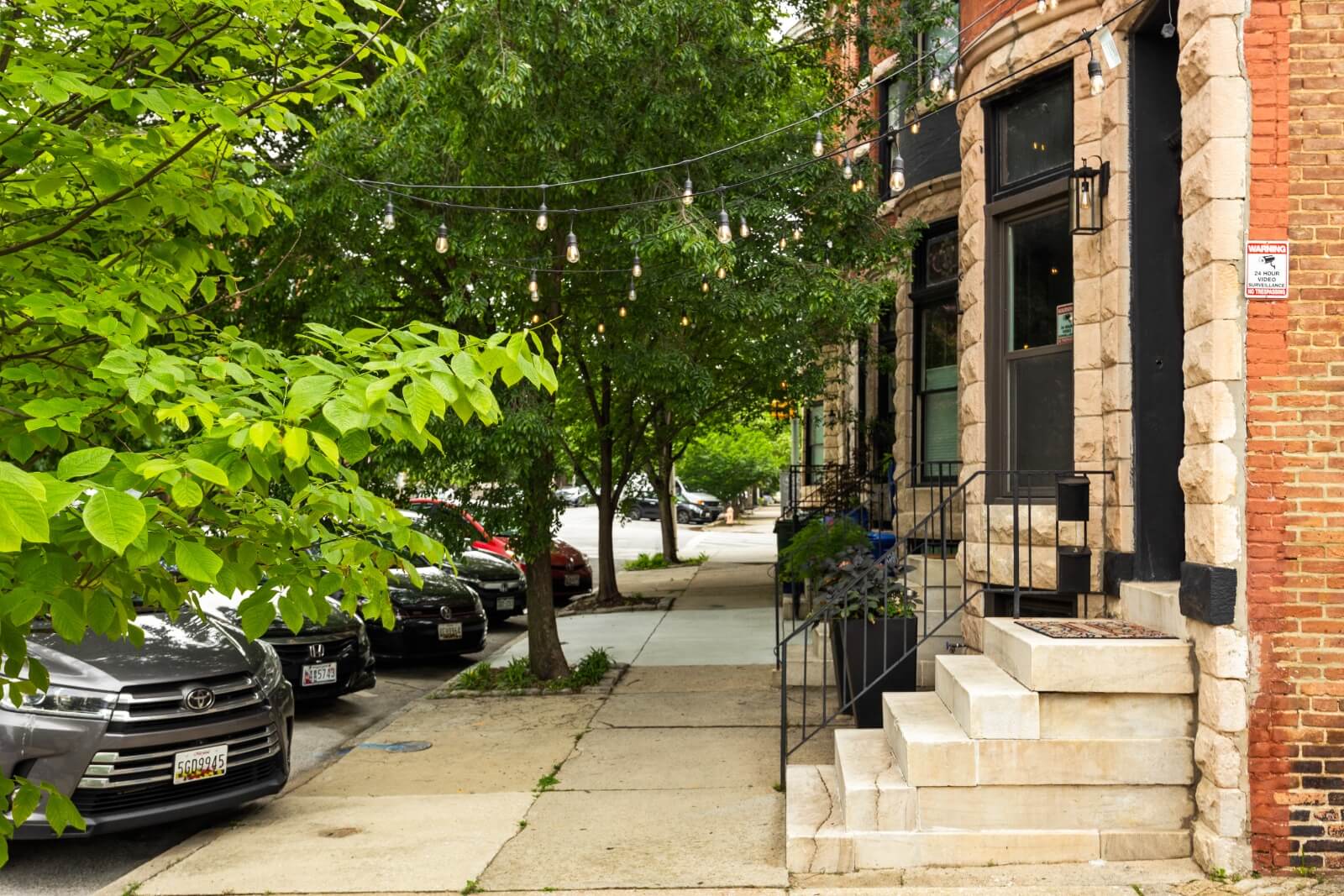
Reservoir Hill’s elaborate homes and beautiful gardens are full of rich history, with many streets being linked to prominent families who settled in Baltimore City. One of the many such figures was Charles Carrollton, signer of the Declaration of Independence and Maryland’s representative at the Continental Congress, who owned 1,000 acres of land including parts of Reservoir Hill in the late 1700’s. Enoch Pratt Carroll, namesake of Baltimore’s Enoch Pratt free library system, was also a property owner in this area. He owned a woodland area known as Callow Grove, a famous picnic place with a spring located in what is now Bolton Street.
In the 1840s, newcomers to the growing industrial city began to migrate north in the direction of the Mount Royal area, which attracted the upper classes who constructed big three- and four-story houses and several impressive churches. During this time, Lloyd Rogers, owner of a vast estate to the northwest of Mount Royal, sold a part of his property known as Druid Hill to the City for $500,000 to be used as a public park. The property had been previously landscaped as a private garden. It featured horse trails, natural lakes, elaborate fountains, sculptures, and a large lake that is today called Druid Hill Reservoir.


Druid Hill Park acted as a magnet for residential development with real estate developers buying land dividing it into small parcels until only a few scattered estates were left. Streetcar lines were built, including a line connecting the Mount Royal area with the center of the city. The early 1900s ushered in booming industrial activity and hundreds of newcomers crowded the city, developing a great need for housing. Large townhouses with 10 or more rooms were subdivided into apartments, while others were cleared to make room for grand high-rise structures. One of these such examples is the Riviera on Druid Lake Drive, as well as the Emersonian on Eutaw Place and Druid Lake Drive.
Today, Reservoir Hills still emits that entrepreneurial spirit by attracting renovators who aspire to convert apartment buildings into the glorious mansion houses of yore. Washington DC transplants have made Reservoir Hill home, as the large townhouses here rival DC’s grand homes at a fraction of the cost, and the neighborhood is a short drive to the MARC station, which zips to DC’s Union Station. Like their predecessors, new residents take pride in cultivating community gardens and boast their green spaces at the annual garden tour. Druid Hill Park remains a popular destination for Baltimoreans of all ages today, who most frequently visit Maryland Zoo. Sandwiched between the Midtown and Mondawmin neighborhoods, Reservoir Hill provides easy access to nightlife, restaurants, cultural amenities, transportation, and shopping.
Healthy Neighborhoods is partnered with Reservoir Hill Improvement Council
Learn more about Reservoir Hill:

